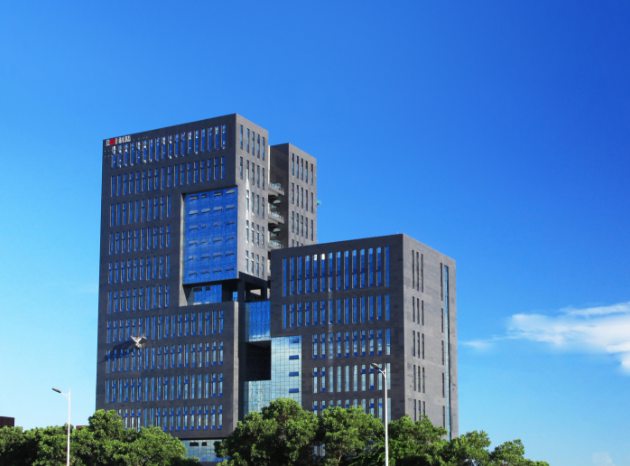- Home
- OFweek News
- CLOU Electronics Shifts Strategy from China to Indonesia in High-Stakes Energy Storage Gamble
CLOU Electronics Shifts Strategy from China to Indonesia in High-Stakes Energy Storage Gamble
Published: March 31, 2025 16:47
CLOU Electronics Co., Ltd. has announced the termination of its production base project in the Pearl River Delta region and the deregistration of the corresponding project company, according to a recent public notice.
The company cited its plans to build an energy storage production facility in Indonesia with a planned capacity of 3GWh as the reason for this strategic pivot. This decision aims to better align production capacity with business development needs, improve capital efficiency, and protect the interests of the company and its shareholders.

source: CLOU electronics
An Abandoned Project
In August 2023, CLOU Electronics had prominently announced a ¥950 million investment to build an energy storage industrial park in Shunde, Foshan, with planned capacity to serve the South China market. The project company "Foshan CLOU Energy Storage Technology Co., Ltd." quickly completed preliminary work including land acquisition (¥55.97 million), planning, design, and construction bidding.
However, as of March 2025, the project had only completed land leveling and enclosure without formally breaking ground, despite accumulating investments of ¥71.6253 million.
While officially attributed to "capacity misalignment with business needs," the deeper cause points to the brutal competition in China's domestic energy storage market. By 2024, domestic commercial and industrial energy storage prices had fallen below ¥0.6/Wh, with CLOU's energy storage business gross margins lagging behind industry leaders. Meanwhile, the Indonesian factory targets Southeast Asia's growing market (30% annual growth) and offers geopolitical advantages in circumventing European and American trade barriers.
CLOU's pivot represents a critical survival decision after four consecutive years of losses exceeding ¥1.7 billion.
Financial Distress Driving Decisions
According to 2024 financial reports, the company recorded revenue of ¥4.431 billion but still suffered a net loss of ¥464 million. With a debt ratio of 93%, a current ratio of just 0.55, and nearly depleted cash flow, the company is in dire straits. As part of its survival strategy, CLOU simultaneously sold its Nanchang subsidiary for ¥125 million, generating a ¥22 million profit, while setting aside ¥346 million for asset impairment provisions.
Industry analysts suggest the new project's success will determine CLOU's survival. If the 3GWh capacity becomes operational as scheduled, the Southeast Asian market could significantly boost profits; if it fails, the ¥71.62 million in sunk costs will accelerate cash flow disruption.
A Strategic Gamble
CLOU Electronics' strategic shift is far from coincidental. Three key survival logics underpin the 3GWh Indonesian factory investment:
First is cost efficiency. Indonesia's abundant mineral reserves can substantially reduce battery raw material costs, while Southeast Asian countries offer lower labor costs and tax incentives, resulting in lower overall costs than China.
Second, Southeast Asia's weak grid infrastructure created a 5GWh energy storage installation gap in 2024. Indonesia, as ASEAN's largest economy, is attracting foreign investment in new energy with "zero tariff" policies.
Finally, while Europe and America impose 10-25% tariffs on Chinese energy storage products, an Indonesian production base can directly supply high-value markets like Japan, Korea, and Australia through the Regional Comprehensive Economic Partnership (RCEP) framework.
This strategy aligns with industry leaders like CATL and BYD. In 2024, CATL announced a $6 billion investment in Indonesia's lithium battery industry chain, while Gotion High-Tech secured local 10GWh energy storage orders, indicating a broader trend of Chinese energy storage companies expanding into Southeast Asia.
Industry Undercurrents
CLOU Electronics' abrupt shift reflects collective anxiety in China's energy storage industry. Domestic overcapacity and price wars are forcing companies to expand overseas, with Southeast Asia emerging as a "second battleground."
The Southeast Asian market offers significant advantages: projections suggest the region's energy storage capacity will exceed 50GWh by 2030, with Indonesia and Vietnam facing electricity shortages exceeding 20%, creating urgent demand for distributed energy storage.
In terms of resource control, Chinese companies are securing critical mineral resources by establishing factories tied to nickel in Indonesia, lithium in Vietnam, and cobalt in the Philippines, restructuring global supply chain dynamics.
Geopolitically, Southeast Asian production bases can avoid US-China trade frictions under the RCEP framework while benefiting from ASEAN internal tariff preferences.
However, the risks are equally sharp—Indonesia has repeatedly and suddenly banned nickel ore exports, labor policies fluctuate, and cultural differences create localization challenges that could transform these "overseas dreams" into potential failures.
Conclusion
CLOU Electronics' strategic retreat and expedition reflect the intense competition in the energy storage industry. When domestic price wars become unsustainable, overseas expansion becomes essential for survival, though the path is fraught with challenges.
The drums of competition are now beating along the equator. The next five years will reveal who can first establish a "resource-manufacturing-market" closed loop in Southeast Asia.
